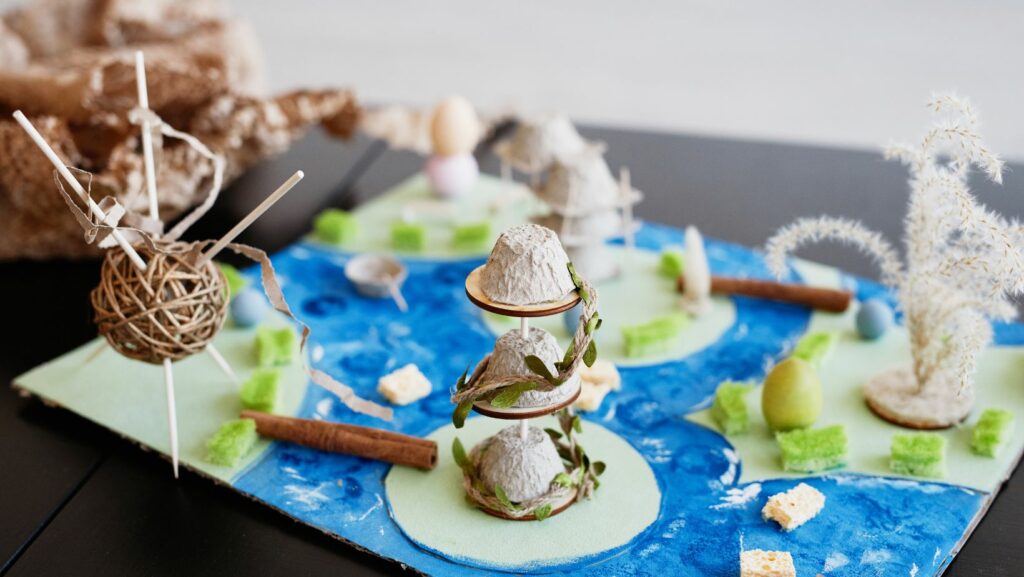Starting a decoration project can be both exhilarating and intimidating. From choosing a color palette to picking the perfect accent pieces, each decision shapes the personality of your space. However, with a little guidance and a clear vision, you can transform any area into your dream environment.
Decoration Project
 Crucial to every decoration project, establishing a balanced budget stands as a key step. It isn’t about splurging on the most expensive items, it’s about making informed decisions that marry style and affordability. A meticulous approach, involving careful evaluation of each expected expense, fosters successful budgeting in decoration projects.
Crucial to every decoration project, establishing a balanced budget stands as a key step. It isn’t about splurging on the most expensive items, it’s about making informed decisions that marry style and affordability. A meticulous approach, involving careful evaluation of each expected expense, fosters successful budgeting in decoration projects.
Lastly, regular review of the established budget remains paramount. It keeps the decoration project on track, and allows for adjustments in instances of price changes. A proactive attitude towards budget revision ensures the project aligns with predetermined costs at all times.
Overall, setting and managing the budget forms the backbone of every successful decoration project. It ensures a seamless transformation of any area into the desired dream environment without straining financial resources.
Evaluating Different Decoration Styles
 Upon settling the budget, the next phase in a decoration project, becoming acquainted with various decoration styles, begins. With an array of styles available, it’s crucial to analyze each carefully. Glossy magazines, online design blogs, and social media platforms (Instagram and Pinterest, for instance) offer excellent resources to explore an assortment of styles that range from rustic and vintage to modern and minimalist.
Upon settling the budget, the next phase in a decoration project, becoming acquainted with various decoration styles, begins. With an array of styles available, it’s crucial to analyze each carefully. Glossy magazines, online design blogs, and social media platforms (Instagram and Pinterest, for instance) offer excellent resources to explore an assortment of styles that range from rustic and vintage to modern and minimalist.
Determining a preferred style involves considering functional needs. For instance, a small apartment might benefit from a minimalist style to maximize space utilization, while a large, open-plan home might lend itself easily to an industrial style. Equally important is personal preference, as the chosen style should reflect the individual’s personality and aesthetic taste.
During evaluation, it’s also noteworthy to factor in the existing furniture, potential for natural light, and the architecture of the space. Identifying the ideal decoration style is not merely about aesthetic vision. It’s as equally about functionality, harmonizing with existing elements, lighting and architecture. It renders the process complex but ultimately rewarding when the finished space embodies the people living within it.
Incorporating Sustainable Practices into Your Decoration Project

Transitioning into the sustainable practice realm, an eco-conscious approach emerges paramount in decoration project development. Opting for durable materials prolongs the lifespan of furnishings, minimizing waste generation, an action endorsed by sustainability proponents. For instance, solid wood furniture or recycled metal fixtures exemplify long-lasting, eco-friendly options. Sourcing locally produced items reduces carbon footprint, a practice exemplified by choosing regional artisans’ craftsmanship over mass-produced décor pieces.
Embracing reusability, second-hand stores or online marketplaces are treasure troves of unique, affordable decorations—each with a history, adding a distinctive charm to the designed space. Natural light maximization plays a significant sustainability role, reducing reliance on artificial lighting, promoting energy conservation. Pairing window furnishings with a room’s orientation optimizes daylight utilization—a practice fondly advocated by sustainable decorators. Finally, plants deliver a potent sustainability punch—they purify the air, offer aesthetic appeal, and fashion a connection with nature—an aspect often cherished in sustainable décor.
Tips for Successful Completion of a Decoration Project
Starting a decor project entails several key steps of planning, strategizing, and executing. First, it’s vital to form a comprehensive plan that incorporates all essential aspects of the project. This includes determining a theme, deciding on color schemes, and selecting materials. Second, one cannot overlook the big picture while focusing on minor details.
This notion suggests considering the chosen style’s compatibility with the space, furniture, and existing architectural elements. Third, consistency should reign throughout the project. Keeping the style, color palette, and materials consistent ensures a balanced and harmonious finish, consequently reflecting the space’s essence effectively.
Lastly, adhering to environmentally responsible practices forms an essential part. Favoring durable, locally sourced, and reusable materials, maximizing natural light, and including plants help accomplish this task, resulting in a sustainably alluring decor outcome. Following these tips could facilitate project completion while encapsulating personal style and taste.

